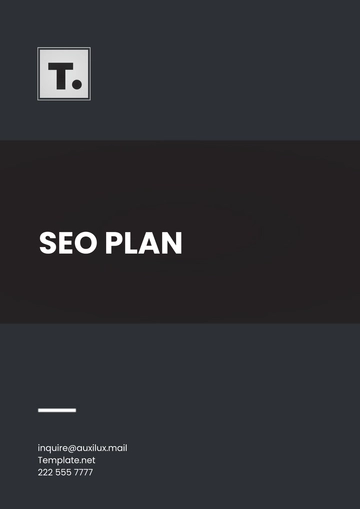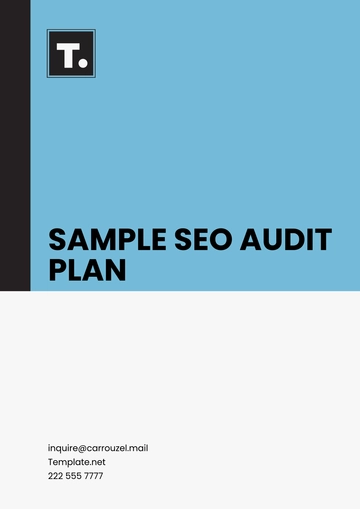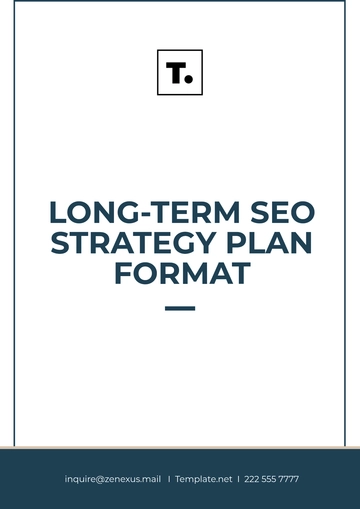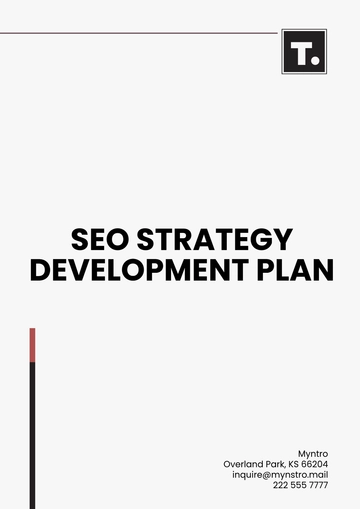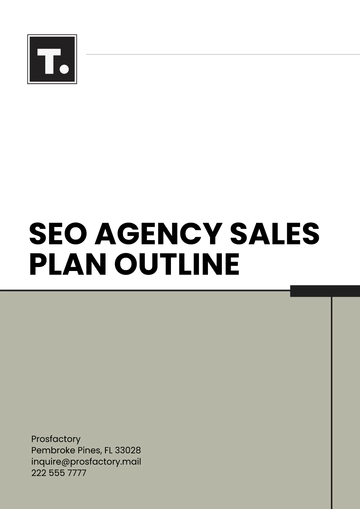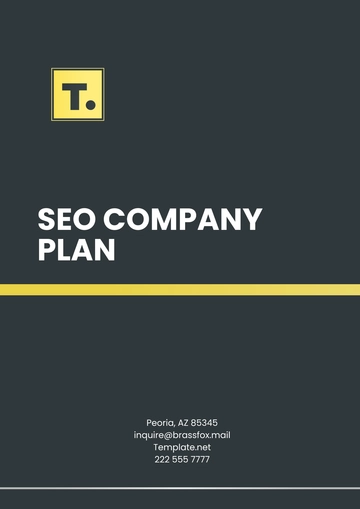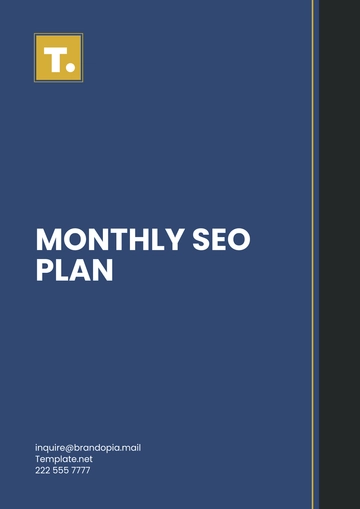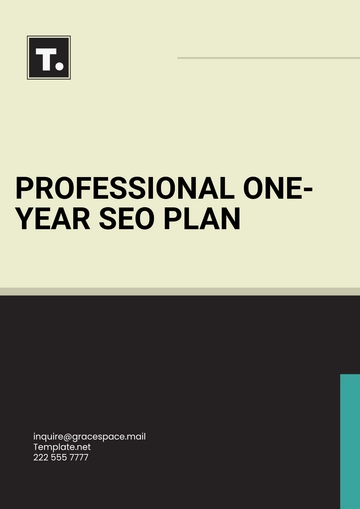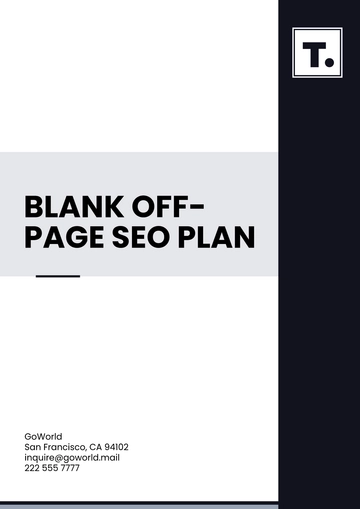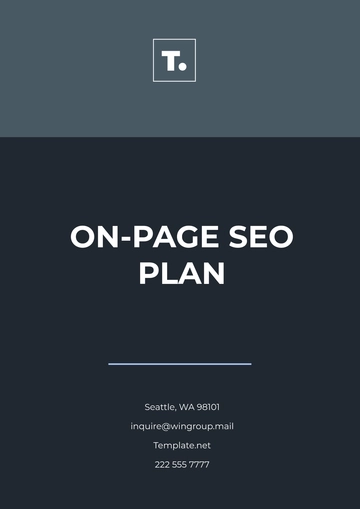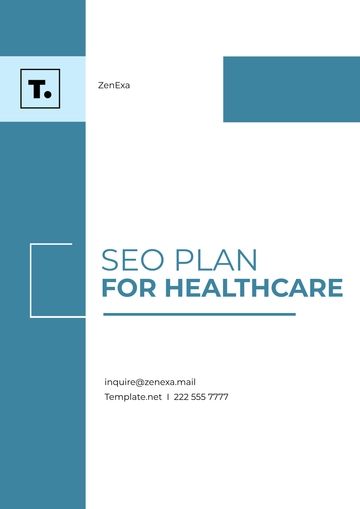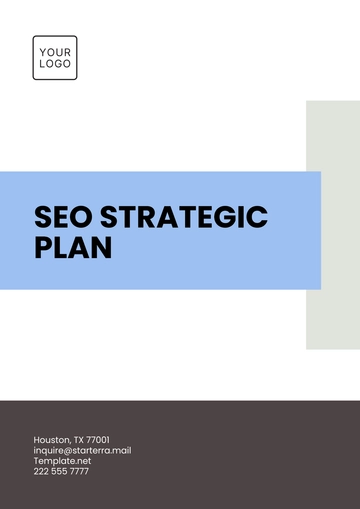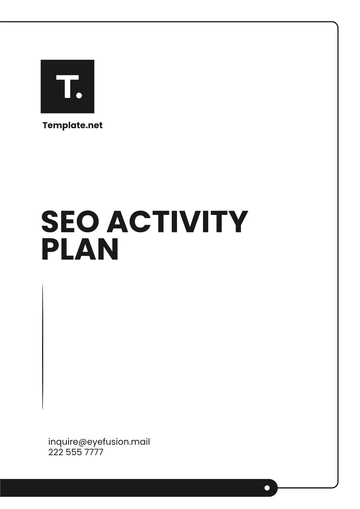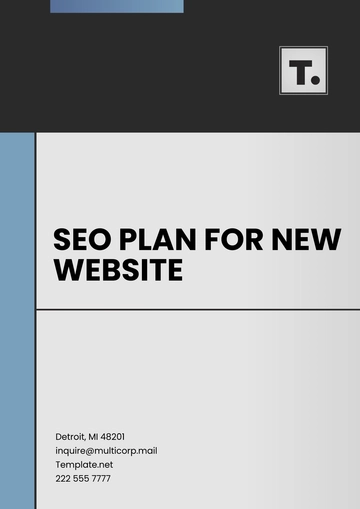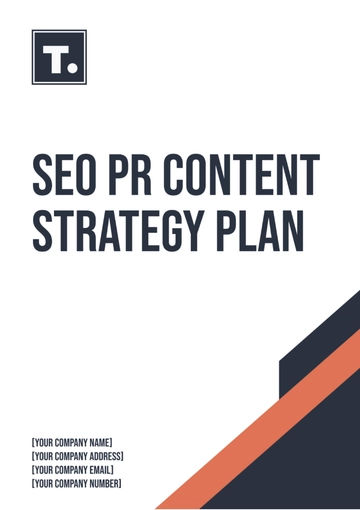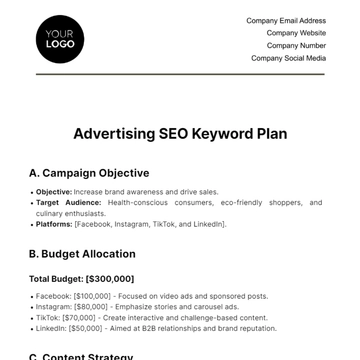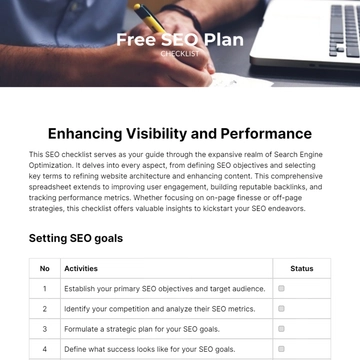Free SEO Plan
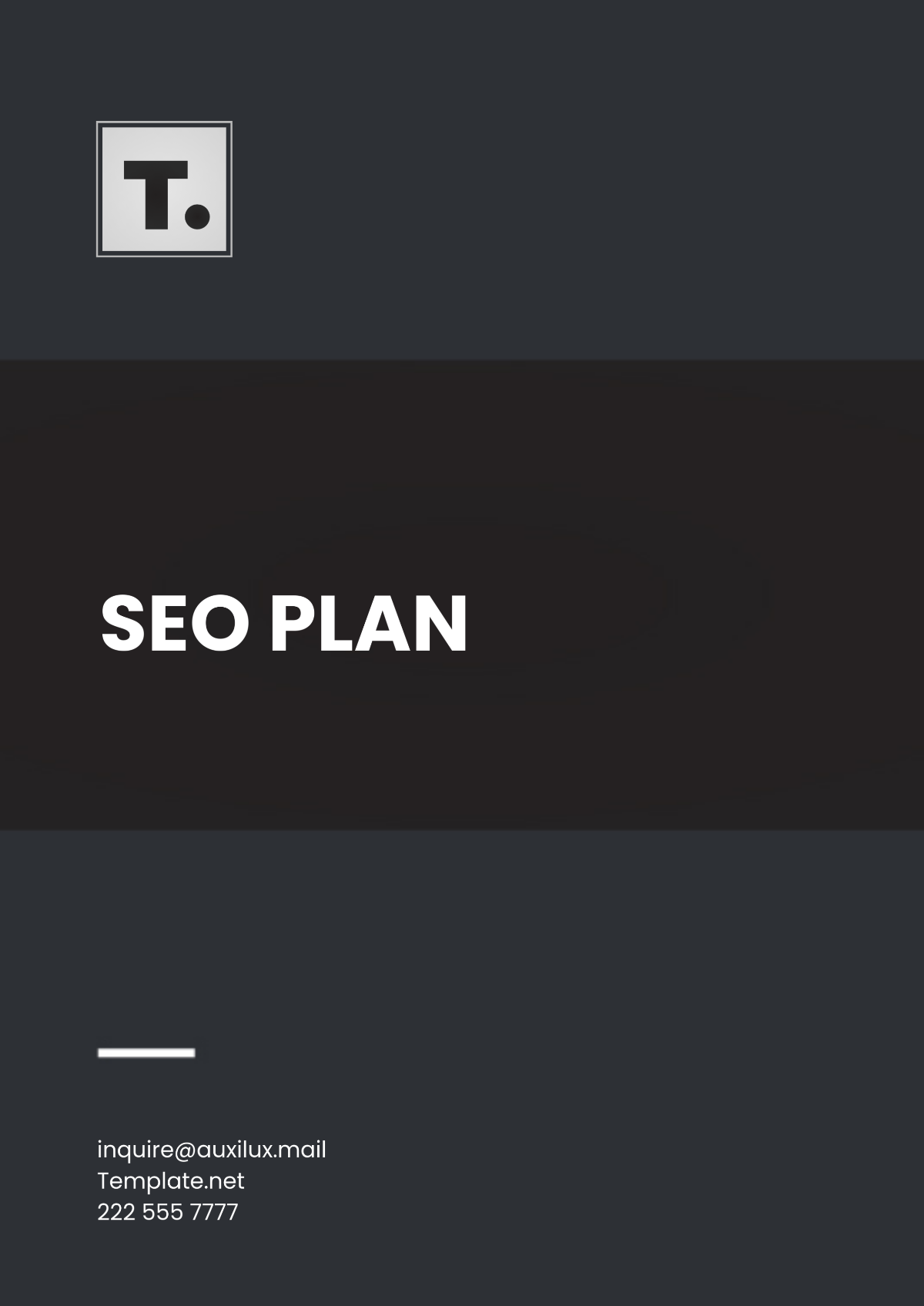
I. Executive Summary
This SEO Plan ensures that the new website launch for [YOUR COMPANY NAME] is optimized for search engines from the start. It outlines the steps necessary to enhance the website's visibility and organic search traffic, aiming to achieve high rankings on search engine results pages (SERPs).
II. Brand Profile
Company Name: [YOUR COMPANY NAME]
Address: [YOUR COMPANY ADDRESS]
Social Media: [YOUR COMPANY SOCIAL MEDIA]
[YOUR COMPANY NAME] is dedicated to providing high-quality technology consulting services to businesses of all sizes. Our mission is to drive innovation and efficiency through cutting-edge technological solutions, and we strive to empower our clients with the tools they need to succeed in a competitive market.
III. SEO Audit
A. Technical SEO Audit
Site Architecture: Ensure clean, crawlable site architecture.
URL Structure: Use SEO-friendly URLs.
Mobile Optimization: Ensure the site is mobile-friendly.
Page Speed: Optimize loading times for all pages.
HTTPS: Ensure the site is secure with HTTPS.
B. On-Page SEO Audit
Title Tags: Optimize title tags with primary keywords.
Meta Descriptions: Write compelling meta descriptions.
Header Tags: Use header tags (H1, H2, H3) appropriately.
Content Quality: Ensure high-quality, relevant content.
Image Optimization: Use alt text for images.
C. Off-Page SEO Audit
Backlinks: Identify opportunities for acquiring quality backlinks.
Social Signals: Integrate social media strategies.
IV. Keyword Research
Conduct thorough keyword research to identify relevant keywords for the website. Focus on high-traffic, low-competition keywords that align with Tech Innovators Inc.'s services.
Keyword | Search Volume | Competition | Relevance |
|---|---|---|---|
Technology consulting | 8,100 | Medium | High |
IT consulting services | 5,400 | Medium | High |
Business technology solutions | 2,900 | Low | High |
Tech consulting firms | 1,800 | Medium | High |
Innovative IT solutions | 1,200 | Low | Medium |
V. Competitor Analysis
Analyze the SEO strategies of top competitors to identify strengths and weaknesses. This includes examining their keyword usage, backlink profiles, content strategies, and technical SEO implementations.
Competitor | Strengths | Weaknesses |
|---|---|---|
Bontora | Strong backlink profile, high-quality content | Poor mobile optimization |
MasterEdge | Fast loading times, good social signals | Weak keyword optimization |
VI. Content Strategy
Develop a content strategy that includes creating, optimizing, and promoting content to attract and engage the target audience.
A. Content Creation
Blog Posts: Regularly publish informative and engaging blog posts.
Product/Service Pages: Create detailed and optimized product/service pages.
Landing Pages: Develop targeted landing pages for specific campaigns.
B. Content Optimization
Keyword Integration: Integrate keywords naturally into content.
Internal Linking: Use internal links to guide visitors through the site.
Multimedia Use: Incorporate images, videos, and infographics.
C. Content Promotion
Social Media: Share content on social media platforms.
Email Marketing: Use newsletters to distribute content.
Influencer Outreach: Collaborate with influencers to expand reach.
VII. Technical SEO Recommendations
Provide guidelines for improving site architecture, page speed, mobile optimization, and overall technical performance.
A. Site Architecture
Simplify navigation to enhance user experience.
Ensure a logical URL structure.
B. Page Speed Optimization
Minimize HTTP requests.
Enable browser caching.
Optimize images and reduce file sizes.
C. Mobile Optimization
Use responsive design.
Prioritize fast loading times for mobile users.
VIII. Link Building Strategy
Develop tactics for acquiring high-quality backlinks to boost the website's authority and ranking.
A. Outreach Campaigns
Identify and contact industry-relevant websites for guest posting opportunities.
Develop relationships with influencers and bloggers.
B. Content Marketing
Create shareable content such as infographics, whitepapers, and case studies.
C. Social Media Engagement
Actively participate in industry discussions and share valuable content.
IX. Measurement & Reporting
Establish metrics, tools, and processes for tracking and analyzing SEO performance.
A. Key Performance Indicators (KPIs)
Organic Traffic: Monitor the number of visitors coming from organic search.
Keyword Rankings: Track the rankings of targeted keywords.
Bounce Rate: Measure the percentage of visitors who leave the site after viewing only one page.
Conversion Rate: Analyze the percentage of visitors who complete desired actions (like making a purchase).
B. Reporting Tools
Google Analytics: Track website traffic and user behavior.
Google Search Console: Monitor search performance and identify issues.
SEO Tools: Use Ahrefs, SEMrush, and Moz tools for keyword tracking and backlink analysis.
C. Reporting Frequency
Provide monthly reports to stakeholders.
Conduct quarterly reviews to adjust strategies as needed.
- 100% Customizable, free editor
- Access 1 Million+ Templates, photo’s & graphics
- Download or share as a template
- Click and replace photos, graphics, text, backgrounds
- Resize, crop, AI write & more
- Access advanced editor
Create a winning SEO strategy with Template.net’s SEO Plan Template. Customizable and editable in our Ai Editor Tool, it allows you to tailor it to suit your specific needs. Develop a detailed plan to boost your website's visibility and drive organic traffic. Get started today and see your search engine rankings soar!
You may also like
- Finance Plan
- Construction Plan
- Sales Plan
- Development Plan
- Career Plan
- Budget Plan
- HR Plan
- Education Plan
- Transition Plan
- Work Plan
- Training Plan
- Communication Plan
- Operation Plan
- Health And Safety Plan
- Strategy Plan
- Professional Development Plan
- Advertising Plan
- Risk Management Plan
- Restaurant Plan
- School Plan
- Nursing Home Patient Care Plan
- Nursing Care Plan
- Plan Event
- Startup Plan
- Social Media Plan
- Staffing Plan
- Annual Plan
- Content Plan
- Payment Plan
- Implementation Plan
- Hotel Plan
- Workout Plan
- Accounting Plan
- Campaign Plan
- Essay Plan
- 30 60 90 Day Plan
- Research Plan
- Recruitment Plan
- 90 Day Plan
- Quarterly Plan
- Emergency Plan
- 5 Year Plan
- Gym Plan
- Personal Plan
- IT and Software Plan
- Treatment Plan
- Real Estate Plan
- Law Firm Plan
- Healthcare Plan
- Improvement Plan
- Media Plan
- 5 Year Business Plan
- Learning Plan
- Marketing Campaign Plan
- Travel Agency Plan
- Cleaning Services Plan
- Interior Design Plan
- Performance Plan
- PR Plan
- Birth Plan
- Life Plan
- SEO Plan
- Disaster Recovery Plan
- Continuity Plan
- Launch Plan
- Legal Plan
- Behavior Plan
- Performance Improvement Plan
- Salon Plan
- Security Plan
- Security Management Plan
- Employee Development Plan
- Quality Plan
- Service Improvement Plan
- Growth Plan
- Incident Response Plan
- Basketball Plan
- Emergency Action Plan
- Product Launch Plan
- Spa Plan
- Employee Training Plan
- Data Analysis Plan
- Employee Action Plan
- Territory Plan
- Audit Plan
- Classroom Plan
- Activity Plan
- Parenting Plan
- Care Plan
- Project Execution Plan
- Exercise Plan
- Internship Plan
- Software Development Plan
- Continuous Improvement Plan
- Leave Plan
- 90 Day Sales Plan
- Advertising Agency Plan
- Employee Transition Plan
- Smart Action Plan
- Workplace Safety Plan
- Behavior Change Plan
- Contingency Plan
- Continuity of Operations Plan
- Health Plan
- Quality Control Plan
- Self Plan
- Sports Development Plan
- Change Management Plan
- Ecommerce Plan
- Personal Financial Plan
- Process Improvement Plan
- 30-60-90 Day Sales Plan
- Crisis Management Plan
- Engagement Plan
- Execution Plan
- Pandemic Plan
- Quality Assurance Plan
- Service Continuity Plan
- Agile Project Plan
- Fundraising Plan
- Job Transition Plan
- Asset Maintenance Plan
- Maintenance Plan
- Software Test Plan
- Staff Training and Development Plan
- 3 Year Plan
- Brand Activation Plan
- Release Plan
- Resource Plan
- Risk Mitigation Plan
- Teacher Plan
- 30 60 90 Day Plan for New Manager
- Food Safety Plan
- Food Truck Plan
- Hiring Plan
- Quality Management Plan
- Wellness Plan
- Behavior Intervention Plan
- Bonus Plan
- Investment Plan
- Maternity Leave Plan
- Pandemic Response Plan
- Succession Planning
- Coaching Plan
- Configuration Management Plan
- Remote Work Plan
- Self Care Plan
- Teaching Plan
- 100-Day Plan
- HACCP Plan
- Student Plan
- Sustainability Plan
- 30 60 90 Day Plan for Interview
- Access Plan
- Site Specific Safety Plan
